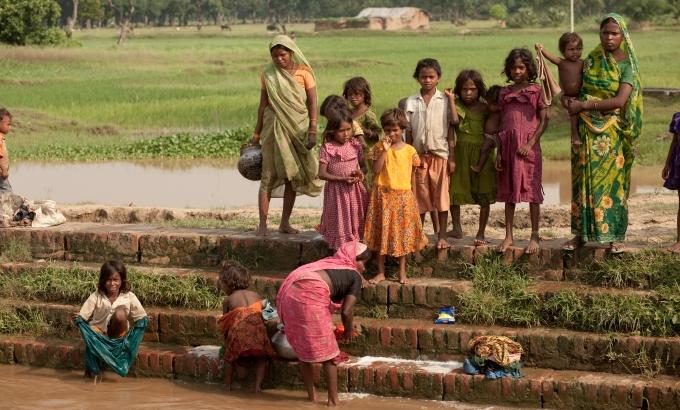Originally posted on USAID’s IMPACT Blog on Thursday, May 2 2013. Authored by Stephen Baker, PhD and Jeremy Farrar, BSc, MBBS, FRCP, DPhil of The Hospital for Tropical Diseases, Vietnam – both members of the Coalition against Typhoid.
The lack of a robust, sensitive, and easy-to-use diagnostic test is one of the most serious barriers to the control and prevention of typhoid fever.
Typhoid fever is a severe bacterial infection spread through water or food that has been contaminated with human waste. The disease causes high fever, flu-like symptoms, abdominal pain, and systemic illness that can result in severe morbidity or death.
An estimated 21 million people fall ill due to typhoid each year, and unfortunately, the burden of disease is greatest among the most vulnerable: school- and pre-school-age children. These children primarily live in poverty throughout Asia and Africa, typically in crowded and unsanitary conditions without access to safe water or basic sanitation.
When they fall ill with typhoid, recovery is no guarantee. WHO estimates at least 216,000 people die from typhoid each year. The disease can be treated with antibiotics, but resistance to common drugs is widespread and increasing.
The lack of effective diagnostics means it is more difficult to identify patients, provide effective treatment and prevent the disease from spreading, especially for drug resistant typhoid. It also hinders our ability to conduct surveillance and to identify high-burden and at-risk populations. For policymakers, ministries of health, and others, this lack of diagnostics obscures the true impact of the disease, and reduces the sense of urgency that is required to address it.
There are vaccines available to prevent typhoid; however, they have limitations. Existing vaccines are only moderately effective and provide limited protection to young children. But without a more trusted method for identifying patients, it is also more difficult to conduct efficacy trials of next generation vaccines and clinical therapies. The lack of a sensitive diagnostic test increases the number of patients that must be recruited for these trials and, as a result, dramatically increases the associated costs and time. As a result, in the past few decades, the field has moved forward only with public sector investment.
We don’t have to wait for next generation diagnostics to make a strong case that international organizations and national governments should invest in the control and prevention of typhoid. Timely case identification and management with antibiotics has dramatically reduced case fatality rates, and access to clean water and basic sanitation will provide the best long-term solution.
But at the same time, we know that next generation vaccines providing high levels of lasting protection as early as infancy and effective clinical care may not become available to the children that would benefit most because the cost of needed trials is too high. And when children’s lives are at stake, we need to move quickly. That’s why we need to rise to the challenge of developing better typhoid diagnostics, and soon.
Photo: Women and children in Bihar state, India. Esther Havens



